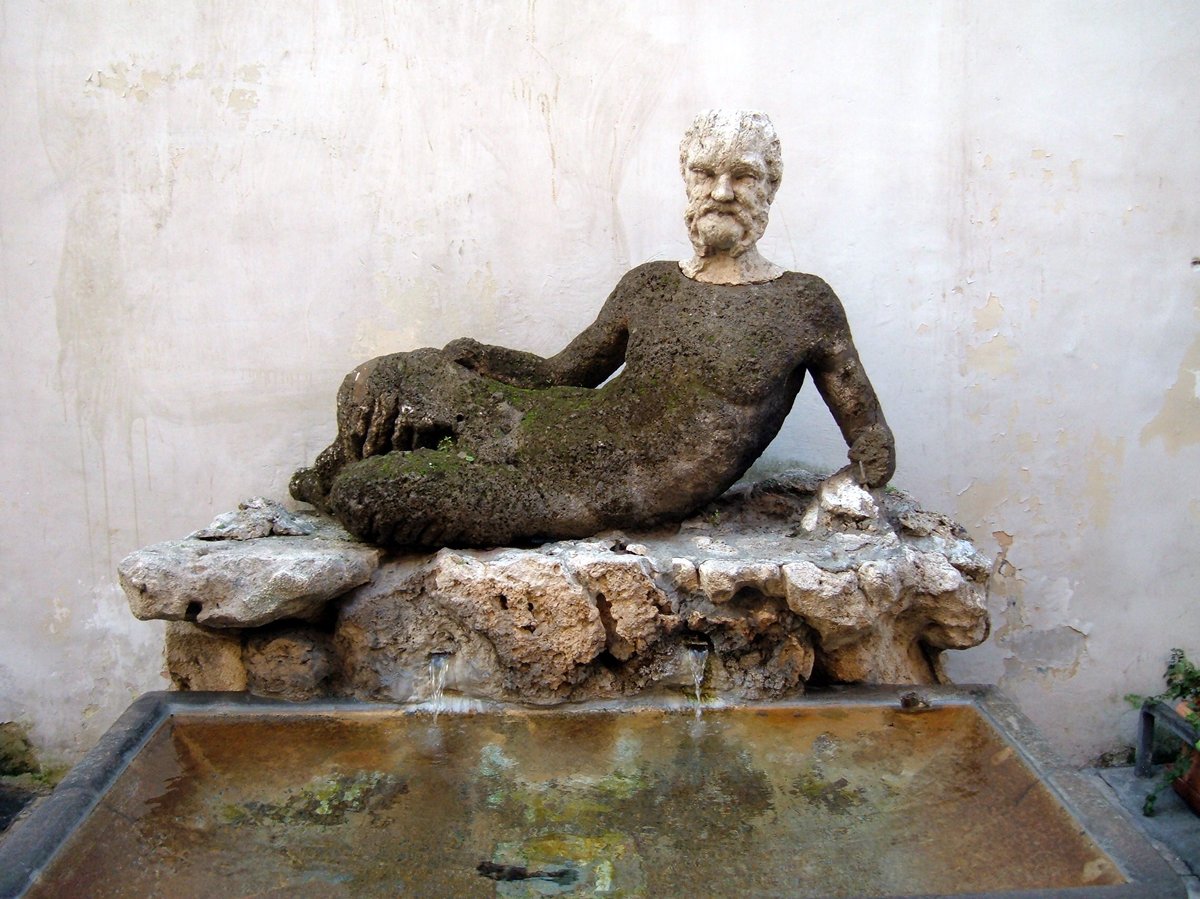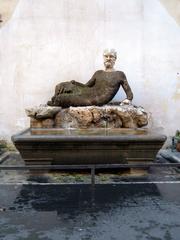
Visiting the Fountain of the Babuino, Rome: Tickets, Hours, and Complete Guide
Date: 14/06/2025
Introduction
Located on the bustling Via del Babuino, the Fountain of the Babuino (Fontana del Babuino) is a distinctive Roman landmark that encapsulates centuries of history, artistic tradition, and civic culture. Commissioned in the late 16th century by merchant Alessandro Grandi, it is best known for its reclining Silenus statue—whose rough, baboon-like features inspired both the fountain’s nickname and the street’s current name. As one of Rome’s six famous “talking statues,” the Babuino has long served as a platform for anonymous political satire and social commentary, reflecting the city’s vibrant tradition of public engagement and humor.
Today, the fountain is an accessible, free attraction surrounded by some of Rome’s most iconic sites, including Piazza di Spagna, the Spanish Steps, and Piazza del Popolo. Whether you are an art lover, history enthusiast, or simply curious, this guide offers everything you need to know to plan your visit, including historical context, practical tips, nearby attractions, and how to make the most of your experience (Turismo Roma; Roma Sparita; Rome.us).
Table of Contents
- Historical Origins
- Artistic and Architectural Features
- The Babuino as a Talking Statue
- Cultural and Social Significance
- Visiting Information
- Practical Tips
- FAQs
- Conclusion
- References and Further Reading
Historical Origins
The Fountain of the Babuino was erected in 1576, financed by Alessandro Grandi as part of a civic initiative allowing private citizens access to water in exchange for constructing public amenities (Turismo Roma). The fountain was originally installed on Via Paolina, later renamed Via del Babuino due to the popularity of its unique statue. The central figure is a reclining Silenus, a mythological figure associated with Dionysus, depicted here with exaggerated, grotesque features that locals thought resembled a baboon (Atlas Obscura; Wikipedia).
Throughout its history, the fountain has undergone several relocations and restorations. In 1738, the Boncompagni-Ludovisi family renovated and repositioned it, and in 1957, after decades of separation between statue and basin due to urban modernization, public advocacy led to their reunification near the Church of Sant’Atanasio dei Greci (Turismo Roma).
Artistic and Architectural Features
The fountain is a blend of ancient and Renaissance elements. Its granite basin, likely repurposed from Roman ruins, supports a life-sized tufa stone Silenus. The statue’s rustic, coarse features and relaxed posture contrast sharply with Rome’s more grandiose fountains, endearing it to the public for its accessibility and character (Sovrintendenza Roma).
Later enhancements, such as the addition of travertine dolphins and a decorative niche, further integrated the fountain into the urban landscape. Its simple water flow and approachable design make it a functional yet charming fixture on Via del Babuino (Roma.com).
The Babuino as a Talking Statue
The Fountain of the Babuino is one of Rome’s six “talking statues,” historical figures around which citizens posted satirical verses, or pasquinades, often criticizing authorities in an era when open dissent was dangerous (Wanted in Rome). The Babuino’s rough-hewn appearance made it a fitting emblem for the common people’s grievances and humor. This tradition persists today, with the wall behind the statue occasionally serving as a modern canvas for graffiti and public expression.
Cultural and Social Significance
From its inception, the Babuino reflected the interplay between civic utility and popular wit. Initially mocked for its “ugly” features, it gradually became a beloved symbol of Roman humor, resilience, and community pride. Its role as a gathering place and platform for free expression has cemented its status as a cultural touchstone in Rome’s collective memory (Roma Sparita; Google Arts & Culture).
Visiting Information
Hours and Accessibility
- Hours: The Fountain of the Babuino is a public monument accessible 24 hours a day, 7 days a week. There are no entry fees or tickets required.
- Accessibility: The fountain is at street level on a paved section of Via del Babuino. While mostly accessible for wheelchairs and strollers, some cobblestone areas may pose minor difficulties.
How to Get There
- Address: Via del Babuino, near the Church of Sant’Atanasio dei Greci, between Piazza del Popolo and Piazza di Spagna.
- By Metro: Spagna (Line A) is the nearest metro station, approximately 5 minutes on foot.
- By Bus: Several lines serve Piazza del Popolo and Piazza di Spagna.
- On Foot: The fountain is easily included on a walking tour of central Rome.
Nearby Attractions
- Piazza del Popolo: Grand public square with obelisks and twin churches.
- Spanish Steps: Iconic Baroque stairway.
- Via Margutta: Artistic enclave known for its galleries.
- Villa Borghese Gardens: Expansive park nearby.
Rules and Etiquette
- Preservation: Do not sit, climb, or wade in the fountain. Drinking or eating around the monument should be done discreetly.
- Photography: Permitted for personal use. Professional equipment such as tripods may require special permission.
- Cleanliness: Dispose of waste properly to maintain the historic environment.
- Respect: Adhere to posted regulations and local customs to avoid fines (Lonely Planet).
Tours and Events
- Guided Tours: Many walking tours of Rome’s historic center include the Babuino, often focusing on the “talking statues” or baroque fountains.
- Events: Occasionally, nearby cultural events and performances enliven the area.
Practical Tips
- Best Visiting Times: Early mornings or late afternoons offer optimal lighting and fewer crowds.
- Safety: Be mindful of pickpockets, especially around tourist hotspots.
- Weather: Summers can be hot—bring water and wear sun protection.
- Language: Most local signage is in Italian, but staff in area shops and hotels often speak English.
- Accessibility: While generally accessible, some cobblestone areas may be uneven.
FAQs
Is the Fountain of the Babuino free to visit?
Yes, it is a public monument with free, unrestricted access.
Are there any restrictions at the fountain?
Yes. Do not sit, climb, or wade in the fountain. Eating and drinking nearby should be done responsibly.
Is the fountain wheelchair accessible?
The fountain is at street level and generally accessible, but some uneven pavement exists.
Can I take professional photos?
Personal photography is allowed. For professional shoots, check local regulations for permits.
What other sites can I visit nearby?
Piazza del Popolo, Spanish Steps, Via Margutta, and Villa Borghese Gardens are all within walking distance.
Conclusion
The Fountain of the Babuino is a living testament to Rome’s unique blend of history, humor, and artistic legacy. From its Renaissance-era origins to its enduring status as a civic symbol and talking statue, the fountain offers an enriching experience for every visitor. Its central location, free access, and proximity to major attractions make it an essential stop on any exploration of Rome’s historic center.
Plan your visit to the Babuino for a glimpse into the playful, resilient spirit that defines the Eternal City. Engage with its stories, respect its traditions, and become part of the ongoing dialogue that this remarkable monument inspires.
Alt text: Fountain of the Babuino in Rome, featuring the Silenus statue on Via del Babuino.
Alt text: Map showing the location of the Fountain of the Babuino in central Rome.
For a virtual tour and additional images, visit Virtual Tour of the Fountain of the Babuino.
References and Further Reading
- Turismo Roma - Fountain of the Babuino
- Roma Sparita - La Fontana del Babuino
- Roma.com - La Fontana del Babuino: La storia di un monumento deriso dal popolo
- Rome.us - Talking Statues of Rome
- Wanted in Rome - The Curious Story of Rome’s Talking Statues
- Google Arts & Culture - From the Great Aqueducts to the Famous Fountains of Rome
- Lonely Planet - Things to Know Before Traveling to Rome
- Oyster.com - Babuino 181, Rome
- Atlas Obscura - Il Babuino (The Baboon)
- Wikipedia - Babuino
- Rome Actually - Famous Fountains in Rome
For more travel insights and audio guides, download the Audiala app or follow us on social media for up-to-date tips on Rome’s hidden gems.


















































































































































































































































